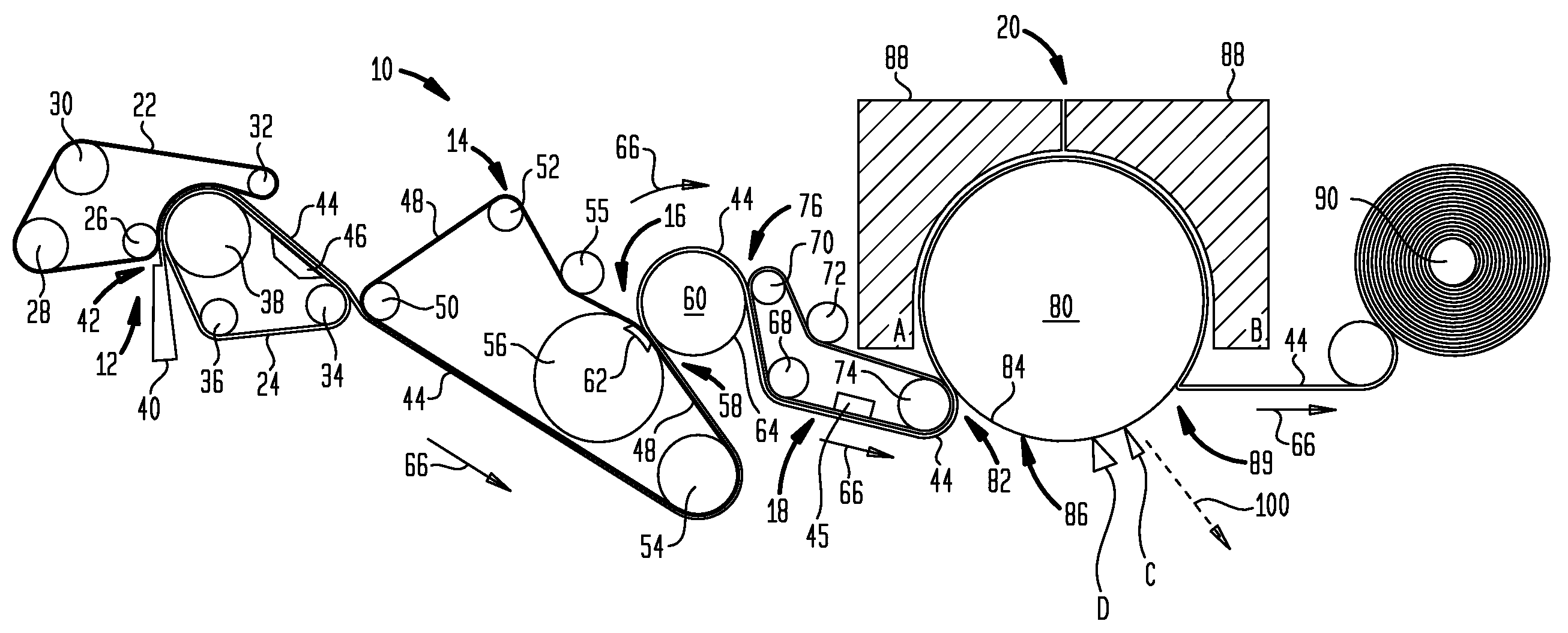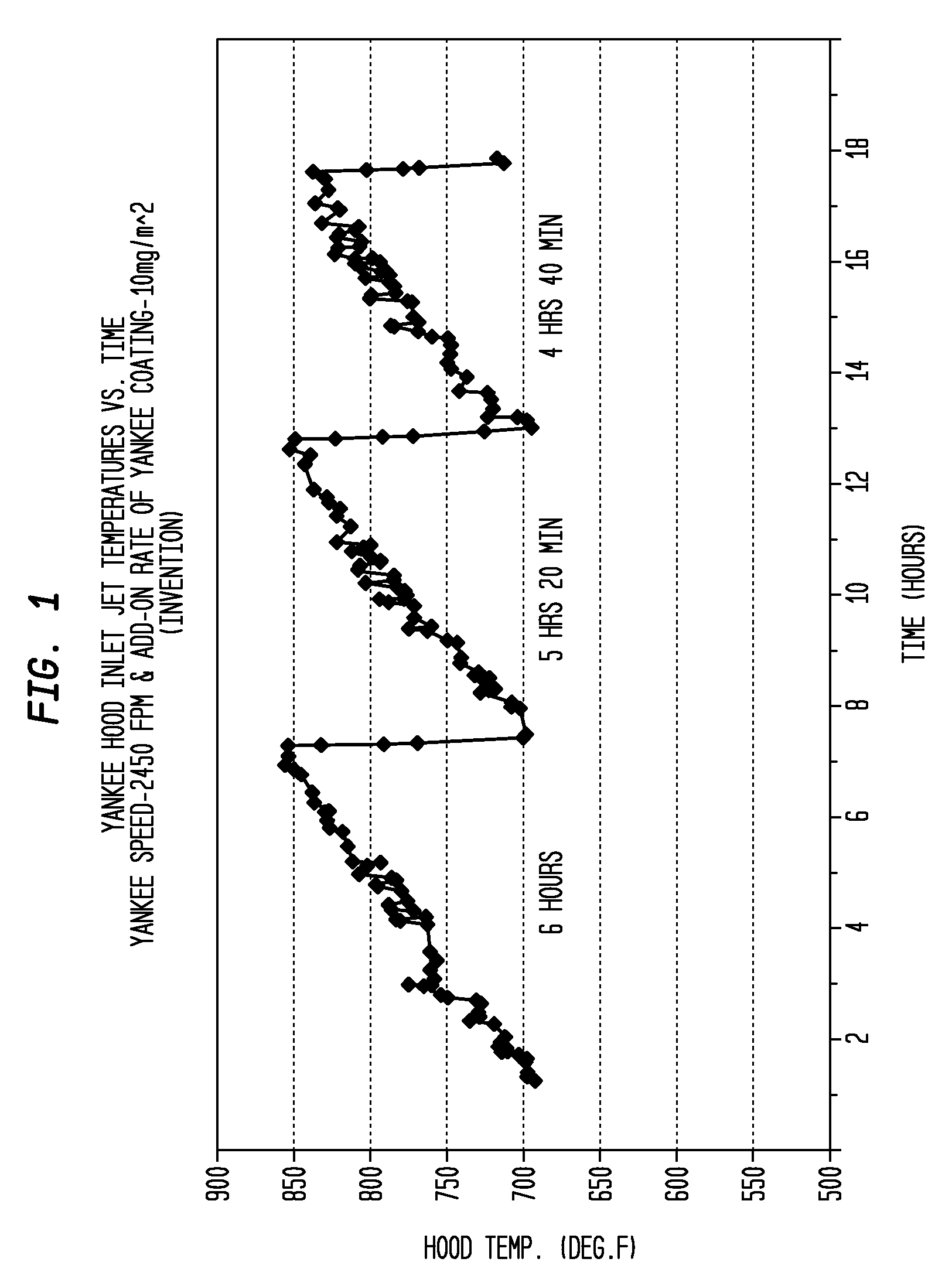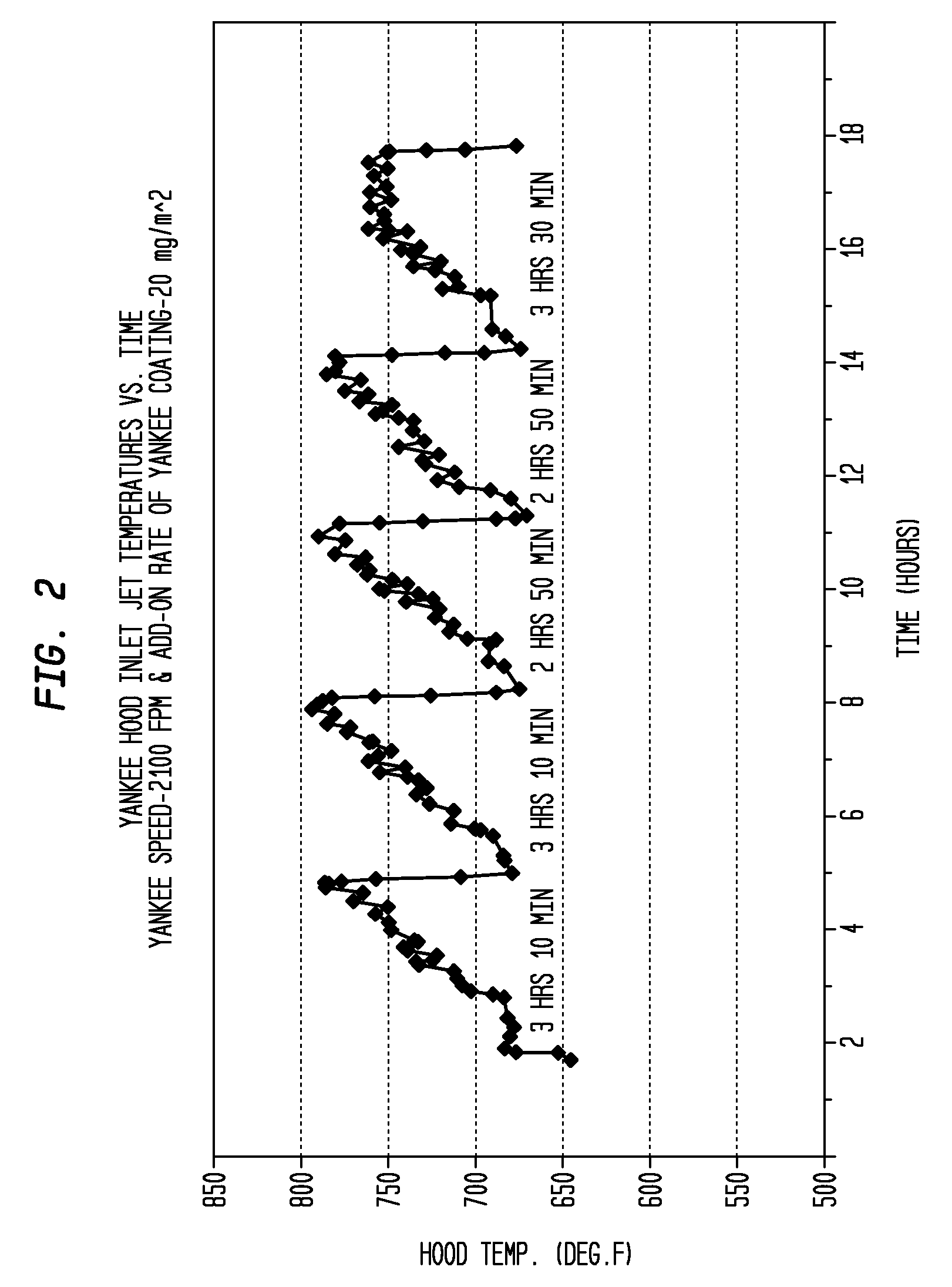Fabric-Crepe Process With Prolonged Production Cycle and Improved Drying
a fabriccrepe and production cycle technology, applied in the direction of non-fibrous pulp addition, drying, light and heating equipment, etc., can solve the problems of relatively high sheet dryness and high production cost, and achieve the effect of increasing productivity and keeping the amount of adhesive added low
- Summary
- Abstract
- Description
- Claims
- Application Information
AI Technical Summary
Benefits of technology
Problems solved by technology
Method used
Image
Examples
examples
[0107]Utilizing a paper machine of the class shown in FIGS. 6 and 7, a series of trials were performed manufacturing absorbent basesheet on a commercial paper machine. Typical conditions appear in Table 2, above. Creping adhesive compositions were used which included commercial polyamidoamine resin compositions, a commercial polyvinyl alcohol resin and commercial creping modifier compositions. Typical resinous creping compositions included 60-70% by weight PVOH, 25-35% by weight PAE resin composition and 5-20% by weight creping modifier. The resin composition selected must be effective to transfer the web from the creping fabric to the Yankee cylinder at the add-on levels employed. The more salient features and results are presented in FIGS. 1-5.
[0108]FIG. 1 is a plot of hood temperature versus time for three production intervals on a commercial paper machine. The machine was operated at 2,450 fpm with an add-on rate of Yankee creping adhesive of 10 mg / m2. The backing cylinder 60 wa...
PUM
| Property | Measurement | Unit |
|---|---|---|
| Temperature | aaaaa | aaaaa |
| Temperature | aaaaa | aaaaa |
| Temperature | aaaaa | aaaaa |
Abstract
Description
Claims
Application Information
 Login to View More
Login to View More - R&D
- Intellectual Property
- Life Sciences
- Materials
- Tech Scout
- Unparalleled Data Quality
- Higher Quality Content
- 60% Fewer Hallucinations
Browse by: Latest US Patents, China's latest patents, Technical Efficacy Thesaurus, Application Domain, Technology Topic, Popular Technical Reports.
© 2025 PatSnap. All rights reserved.Legal|Privacy policy|Modern Slavery Act Transparency Statement|Sitemap|About US| Contact US: help@patsnap.com



